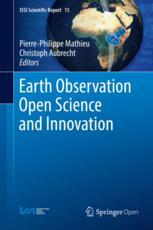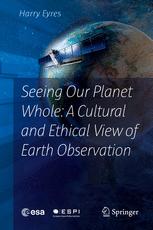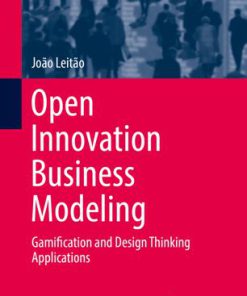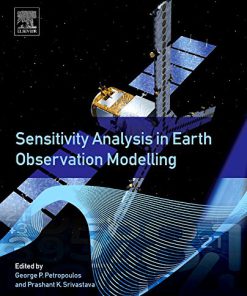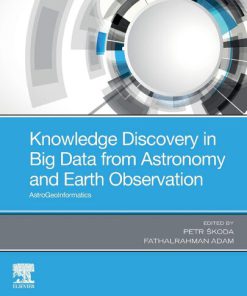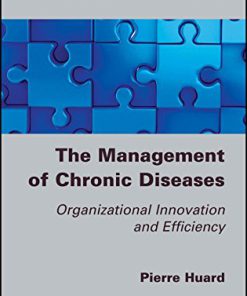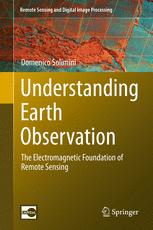Earth Observation Open Science and Innovation 1st Edition by Mathieu, Pierre Philippe Mathieu, Christoph Aubrecht 3319880705 978-3319880709
$50.00 Original price was: $50.00.$25.00Current price is: $25.00.
Earth Observation Open Science and Innovation 1st Edition by Mathieu, Pierre-Philippe Mathieu, Christoph Aubrecht – Ebook PDF Instant Download/Delivery: 3319880705, 978-3319880709
Full download Earth Observation Open Science and Innovation 1st Edition after payment

Product details:
ISBN10: 3319880705
ISBN13: 978-3319880709
Author: Mathieu, Pierre-Philippe Mathieu, Christoph Aubrecht
This book is published open access under a CC BY 4.0 license.
Over the past decades, rapid developments in digital and sensing technologies, such as the Cloud, Web and Internet of Things, have dramatically changed the way we live and work. The digital transformation is revolutionizing our ability to monitor our planet and transforming the way we access, process and exploit Earth Observation data from satellites.
This book reviews these megatrends and their implications for the Earth Observation community as well as the wider data economy. It provides insight into new paradigms of Open Science and Innovation applied to space data, which are characterized by openness, access to large volume of complex data, wide availability of new community tools, new techniques for big data analytics such as Artificial Intelligence, unprecedented level of computing power, and new types of collaboration among researchers, innovators, entrepreneurs and citizen scientists. Inaddition, this book aims to provide readers with some reflections on the future of Earth Observation, highlighting through a series of use cases not just the new opportunities created by the New Space revolution, but also the new challenges that must be addressed in order to make the most of the large volume of complex and diverse data delivered by the new generation of satellites
Earth Observation Open Science and Innovation 1st Table of contents:
Part I Join the Geo Revolution
The Changing Landscape of Geospatial Information Markets
Introduction
Rise of the Platforms
Data as a Service
Open Data Policies
New Business Models
Sensor Use Growing
Crowdsourcing
Disruptive Innovation
Cloud Computing
Business Models in Cloud Computing
Microsoft Azure
Amazon Web Services (AWS)
Google Cloud Platform
Conclusion
References
The Digital Transformation of Education
Case Study: How the World Bank Group’s Open Learning Campus is Partnering with Earth Observation Satellite Data to Enrich the Learning Experience
Learning as an Accelerator to Achieve Development Goals
Progress of the OLC so Far
Flexible Pathways to Learning
Increasing Importance of Geospatial Data
Examples of How the OLC is Incorporating Spatial Data
Issues Relevant to This Experience for the Earth Observation Community
Case Study Conclusion
References
The Open Science Commons for the European Research Area
Creating the European Research Area: The “Open” Approach
Problems to Solve
Lack and/or Incomplete Roadmaps for Research- and e-Infrastructures
Fragmented Solutions and Policies for Access to Data and Knowledge
Insufficient Cooperation Between Public and Private Sector
Lack of National and European Organization Between All Stakeholders
Many Providers Without a Single Market
The Open Science Commons
The European Open Science Cloud
Open Science Commons for the EOSC
EOSC Architecture and Services
Realizing a Federated Approach to Research Data
Offering of Scalable Access to and Analysis of Research Data for Reuse
Integrating (Shared) Tools and Applications
Provisioning of Services for Depositing Data for Resource-Bound Users
EOSC Service Integration and Management.
EOSC Governance
EOSC and the e-Infrastructure Commons
The EGI Blueprint
Core Infrastructure Platform
Collaborative Platform
The EGI Federated Cloud
The Data Hub and the Open Data Platform
EO Data Exploitation via the e-Infrastructures and EOSC
Infrastructure Services for EO Data Exploitation
An Example: e-Infrastructure Services to Implement the ESA Generic Exploitation Platform Open Architecture
An Example: Integration of the Geohazard Exploitation Platform Within the EGI Infrastructure
Conclusions
References
Citizen Science for Observing and Understanding the Earth
Introduction
Societal and Technological Trends
Citizen Science Today: Main Areas of Activity
Citizen Science Across Domains: Long-Running Citizen Science
The Impact of Technology: Citizen Cyberscience
Depth of Participation: Community Science
Citizen Science and Earth Observation: Technical, Societal, Ethical and Policy Aspects
Technical Aspects
Societal and Ethical Aspects
Citizen Science Integration into Policy
Conclusions
References
Part II Enabling Data Intensive Science
Fostering Cross-Disciplinary Earth Science Through DatacubeAnalytics
Introduction
Standards-Based Modelling of Datacubes
Coverage Data Model
Web Coverage Service
Web Coverage Processing Service
The Role of Standards
Science Data Services
Earth Observation Data Services
Marine Science Data Service
Climate Science Data Service
Planetary Science Data Service
Cross-Service Federation Queries
Datacube Analytics Technology
Array Databases as Datacube Platform
Array Storage
Array Processing
Tool Integration
The Role and Handling of Metadata
Virtual Globes as Datacube Interfaces
Related Work
Conclusion and Outlook
References.
Mind the Gap: Big Data vs. Interoperability and Reproducibility of Science
Introduction: the Big Data Paradox
It’s All in the Framing!
Towards Open (Shared) Knowledge
The GEOSS Case
Big Data Infrastructure Services: The GEOSS Common Infrastructure (GCI) Big Data Strategy
Content Harmonization and Information/Knowledge Generation: The Brokering Framework
The Brokering framework
The DAB
More (Value) knowledge to reduce Volume
From Data to Knowledge: the GEOSS Knowledge Base and High-Performance Data Analytics
The DIKW pattern
The GEOSS Knowledge Base
High-Performance Analytics and GEOSS
Conclusions
References
Cyber-Infrastructure for Data-Intensive Geospatial Computing
Introduction
Settlement Mapping Tool (SMTOOL)
Toolbox for Urban Mobility Simulations (TUMS)
Global Dataset
Framework
OD Tables
Resolution
Unified Network and Population Database
Big Data
Urban Information System (UrbIS)
Leveraging Big Data to Understand Urban Impact on Environment and Climate
Conclusions
References
Machine Learning Applications for Earth Observation
Introduction
What Is Machine Learning?
Some Existing Machine Learning Applications
Machine Learning for Bias Correction and Cross Calibration
Vegetation Indices
Space-Based Measurements of HCl Relevant for Ozone Depletion
HCl and Cly Time Series
Bias Correction of MODIS Aerosol Optical Depth
Data Description
Machine Learning AOD Bias Correction
Machine Learning for New Product Creation
Airborne Particulates
Tracer Correlations
Reconstructing CH4-N2O Correlations
Pollen Estimation
Predicting Pollen Abundance
Using Machine Learning for Ocean Data Products
Dust Source Identification Using Unsupervised Classification
Bolivia and Chile Salt Flats Dust Event.
Bodélé Depression Dust Event
Characterizing Pelagic Habitats Within Coastal Waters
Fish Catch and SOM Classes
Some Likely Future Machine Learning Applications
Hyper-Spectral Imaging and Machine Learning for Real Time Embedded Processing and Decision Support
Oil Spills
Summary
References
New Generation Platforms for Exploration of CrowdsourcedGeo-Data
Introduction
Virtual Globes as the New Generation Visualization Platforms
Virtual Globes for the Exploration of Crowdsourced Geo-Data
Applications
PoliCrowd
Open Data Kit (ODK)
NASA World Wind Java SDK
System Architecture
Overview of Functionalities
Telecommunication Data Viewer
The netCDF Data Format
EST-WA: A Multidimensional Data Viewer
Application of EST-WA to Explore Geo-Crowdsourced Data
Conclusions
References
Part III Use Cases Open Science and Innovation
Mapping Land Use Dynamics Using the Collective Powerof the Crowd
Concept and Context
The Collective Power of the Crowd
VGDI Access and Integration: The Foursquare Use Case
What Is Next and Where Are We Headed?
References
The Emergence of the GeoSharing Economy
GeoSharing Platform Requirements
Technical Access
Commercial and Legal Access
Reference
Sustainable Agriculture and Smart Farming
Multi-Year Site-Characterization of Fields Using Advanced Data Harvesting Techniques
Up-to-Date Crop Status Using Access to Satellite Data in Near-Real-Time
Conclusions and Outlook
References
Earth Observation Data for Enterprise Business Applications
Development of an Earth Observation Cloud Platform in Support to Water Resources Monitoring
Introduction
EODC: The Earth Observation Data Centre for Water Resources Management
Pilot Services
Closing Remarks
References
Putting Big Data Innovation into Action for Development.
Tracking Light from the Sky: Monitoring Rural Electrification from Space
Tracking Poverty from Space
Satellite-Based Yield Measurement
Conclusion
Mapping Floods and Assessing Flood Vulnerability for Disaster Decision-Making: A Case Study Remote Sensing Applicationin Senegal
Introduction
Why Senegal? An Example of the Critical Information Gap in Disaster Management
Socio-Physical Vulnerability to Flooding to Senegal
Using Big Data Information in Disaster Management
The Future of This Approach Globally and Locally as a Practical Tool
Conclusion
References
Earth Observation and Geospatial Implementation: Fueling Innovation in a Changing World
Earth Observation Scientific Data Access, Discovery, and Challenges
How Are Maps and Earth Observation Data Transforming Our World?
Delivering Geospatial Data and Information Products with Web GIS
Esri and Big Data
Notable Solutions and Capabilities
Conclusion
References
Artificial Intelligence and Earth Observation to Explore Water Quality in the Wadden Sea
Introduction
Inductive Learning
Data Description
Methods
Results and Discussion
Conclusions
People also search for Earth Observation Open Science and Innovation 1st :
earth observation applications and global policy frameworks
earth observation startups
scientists observe
earth observation day showcases
global earth observation system of systems
Tags:
Innovation 1st Edition,Earth Observation Open Science,Christoph Aubrecht,Mathieu,Pierre Philippe Mathieu
You may also like…
Computers - Programming
Geodetic Time Series Analysis in Earth Sciences Jean-Philippe Montillet 3030217183 9783030217181
Politics & Philosophy - Social Sciences
Business & Economics
Astronomy - Outer Space - Observation & Exploration
Sensitivity Analysis in Earth Observation Modelling 1st Edition George Petropoulos
Computers - Information Systems
Relationships & Lifestyle - Diet & Nutrition


